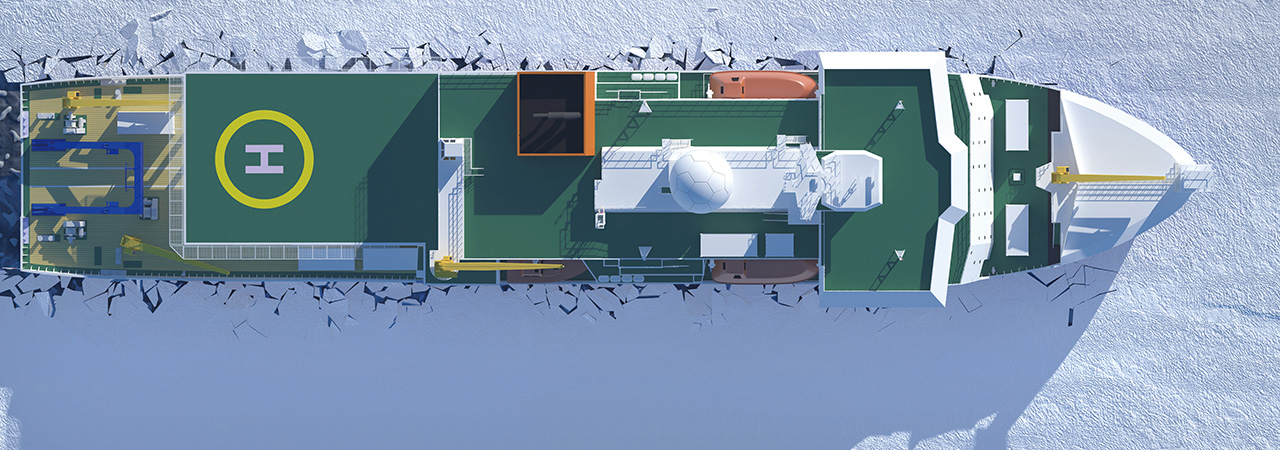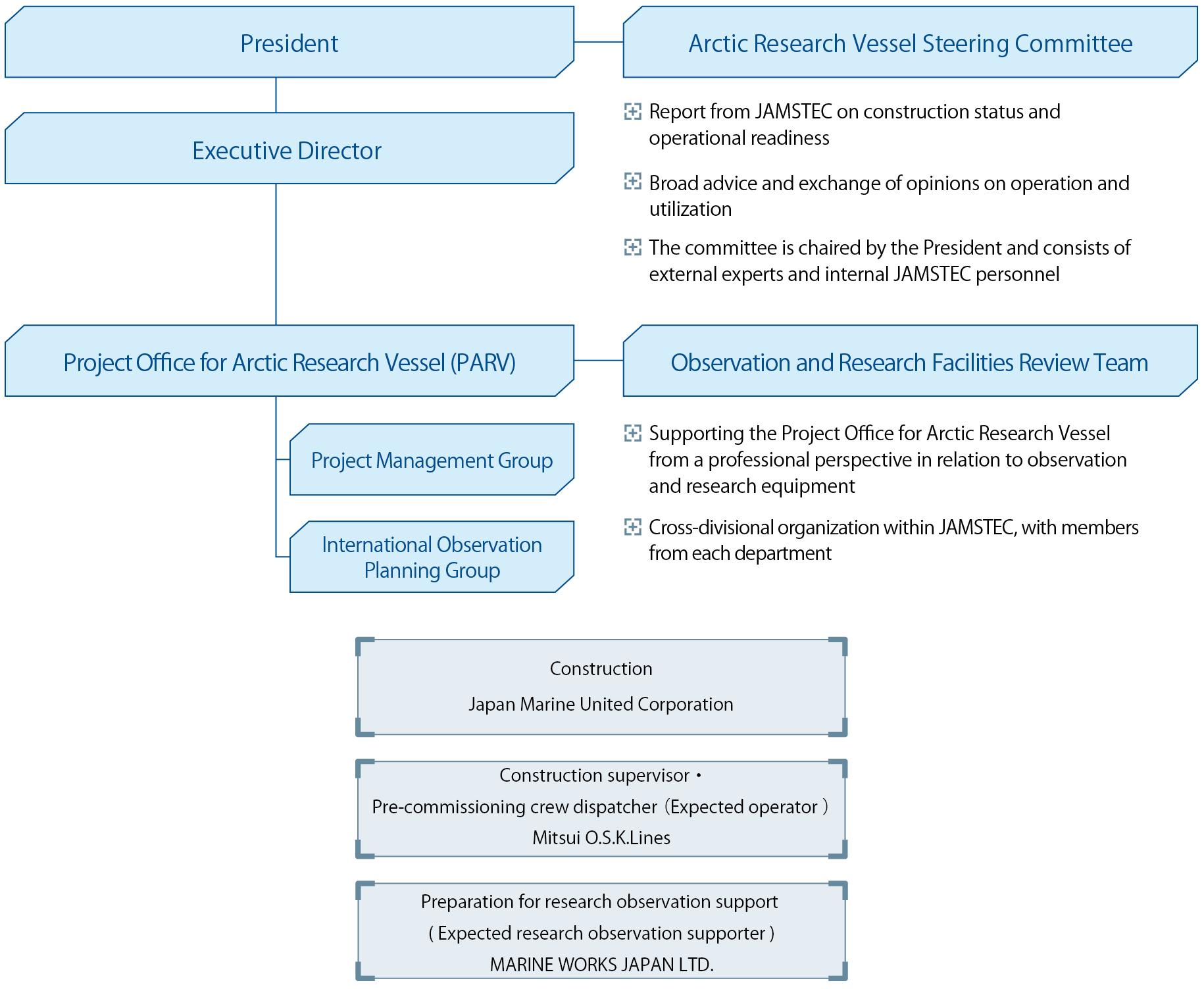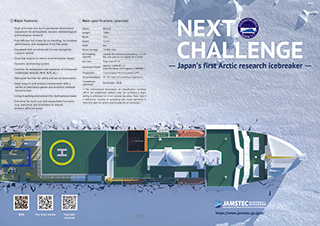Arctic Research Vessel Overview
Background on the Arctic research vessel

The Arctic faces many difficult challenges, including environmental changes that have led to the loss of sea ice; we need to learn how to manage the increased economic activities resulting from these changes. These environmental changes are causing far-reaching effects, some of which are seen as extreme weather systems outside of the Arctic region, e.g. extreme snowfall occurring in Japan. As such, the changing Arctic environment is really a global concern.
Japan, as a nation affected by these changes, and as a world leader in scientific research, has a responsibility to form a commitment to scientific investigations into the changing environment of the Arctic.
Japan is building an Arctic research vessel with icebreaking capabilities and world-class scientific facilities to fulfill these commitments. This research vessel will promote the importance of Arctic science and work towards sustainable development of the Arctic region.
Furthermore, Japan remains committed to developing the next generation of scientists and engineers to utilize this research vessel and plans to develop further and deeper collaborations with our international partners.
Major Features
- High-precision and multi-parameter observation equipment for atmospheric, oceanic, meteorological, and biological research
- Fuel-efficient hull shape for ice-breaking, ice-resistant performance, and navigation in ice-free areas
- Equipped with an advanced ice-sea navigation support system
- Dual-fuel engine to reduce environmental impact
- Dynamic positioning system
- Facilities for deployment and operation of Unmanned Underwater Vehicles (ROV, AUV, etc.)
- Helicopter facilities for safety and sea ice observation
- Ideal research and analysis environment with a variety of laboratory spaces and excellent network infrastructure
- Living & working environment for multinational teams
- Potential for multi-use and expandable functions
(e.g. operation and assistance in natural disaster-affected areas)
Main specifications (planned)
| Name | Mirai Ⅱ |
|---|---|
| Length | 128 m |
| Beam | 23 m |
| Depth | 12.5 m |
| Draft | 8 m |
| Gross tonnage | 13,000 tons |
| Ice-breaking capacity | capable of continuously breaking 1.2 m of flat, one-year ice at a speed of 3.0 knots |
| Ice Class | Polar class PC*4 |
| Generator Diesel |
approx. 5,600kW x 3, Dual fuel diesel (DFD) approx. 2,600kW x 1 |
| Propulsion | Controllable Pitch Propeller(CPP) |
| Accommodation | 97 (34 crew, 63 scientists/engineers) |
| Completion (planned) | November, 2026 |
| Port of Registry | Mutsu |
* The International Association of Classification Societies (IACS) has established uniform rules for certifying a ship's ability to withstand ice in ice-covered sea areas. Polar Class 4 is defined as "capable of navigating year-round operation in thick first-year ice, which may include old ice inclusions."
Arctic Research Vessel Project Organization(as of November 2023)

- Japan Marine United Corporation
- Mitsui O.S.K.Lines
- MARINE WORKS JAPAN LTD.


